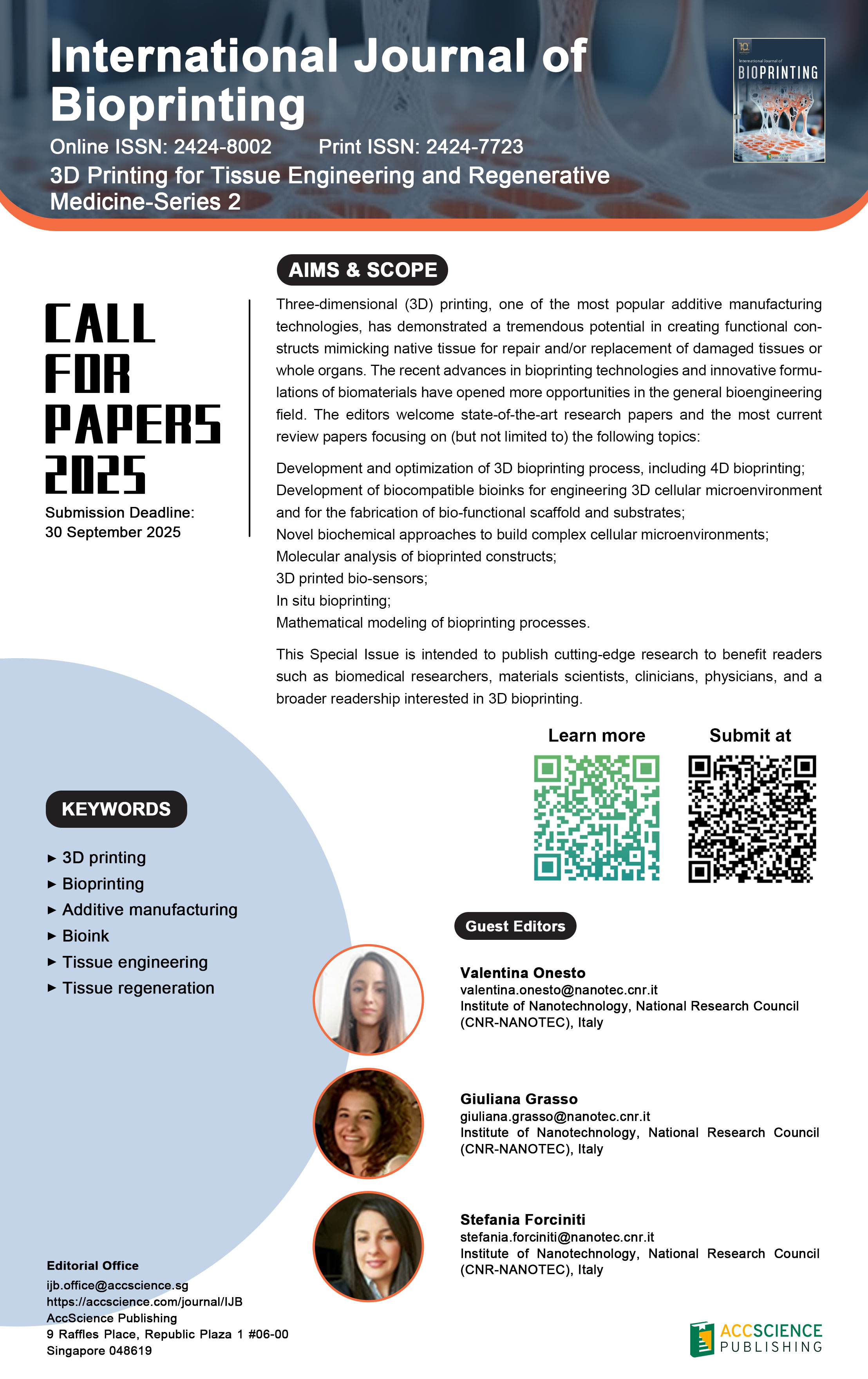
Three-dimensional (3D) printing, one of the most popular additive manufacturing technologies, has demonstrated a tremendous potential in creating functional constructs mimicking native tissue for repair and/or replacement of damaged tissues or whole organs. The recent advances in bioprinting technologies and innovative formulations of biomaterials have opened more opportunities in the general bioengineering field. The editors welcome state-of-the-art research papers and the most current review papers focusing on (but not limited to) the following topics:
- Development and optimization of 3D bioprinting process, including 4D bioprinting;
- Development of biocompatible bioinks for engineering 3D cellular microenvironment and for the fabrication of bio-functional scaffold and substrates;
- Novel biochemical approaches to build complex cellular microenvironments;
- Molecular analysis of bioprinted constructs;
- 3D printed bio-sensors;
- In situ bioprinting;
- Mathematical modeling of bioprinting processes.
This Special Issue is intended to publish cutting-edge research to benefit readers such as biomedical researchers, materials scientists, clinicians, physicians, and a broader readership interested in 3D bioprinting.
Primitive regenerated-tissue evolution in situ after implantation of a 3D-printed tracheal graft
Optimizing printability and mechanical properties of poly(3-hydroxybutyrate) biocomposite blends and their biological response to Saos-2 cells
Biomechanically inspired composite hydrogel bioink enhances engineered cartilage formation




